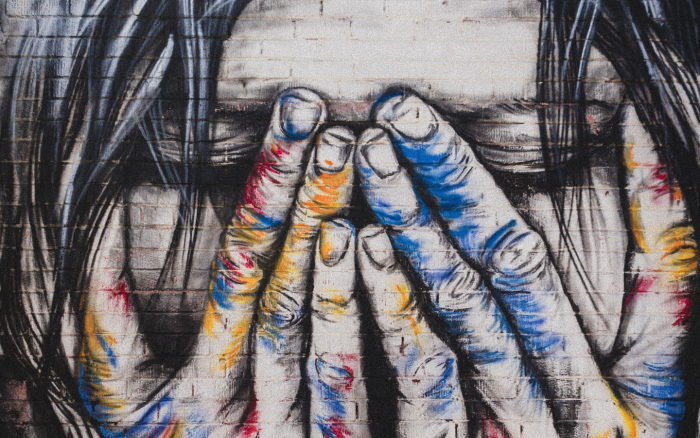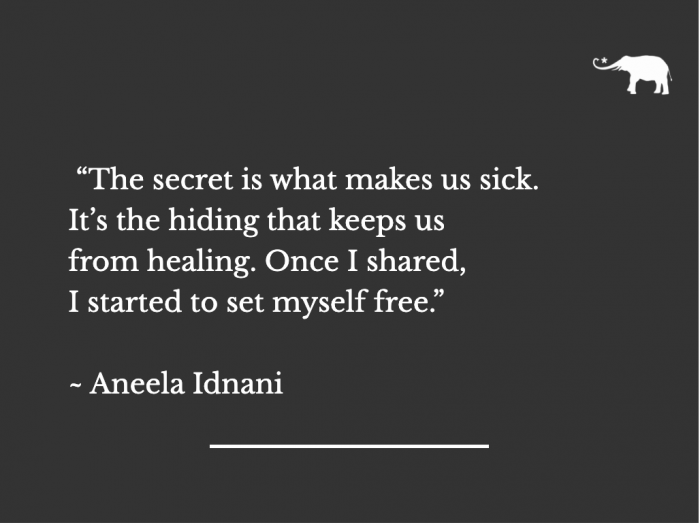—This article is written in partnership with HabitAware—they’re dedicated to helping us to increase real-time awareness and reprogram our response to our body-focused repetitive behavior (BFRB) triggers so that we can heal our body and minds one small, positive action at a time. We’re honored to work with them ~ ed.
“Marisa! Take your hands out of your mouth!”
For 36 years, I’ve heard my mother say these words. More than three decades into life and still, whenever I feel a rough edge on a nail, I gnaw on it. If it’s not a nail, it’s a rough cuticle.
It’s not how I want to be. I’d love to feel feminine with longer nails manicured and painted to match my inner joy with little twinkle toes to match. But if it’s not biting a nail or a cuticle, it’s picking at my toe nails whenever I get the chance.
I pick at the underpart of new nail growth until a horizontal fissure forms and there’s nothing to do but either peel the nail all the way across to the other side or get the nippers and trim—sometimes until they bleed.
>> Stress have you literally pulling out your hair? Not if you wear this.
These are examples of the most common type of disorder you’ve never heard of.
One in twenty people suffer from at least one of these conditions that we often self-label as simply “bad habits.”
But they’re not. They’re called Body-Focused Repetitive Behaviors (BFRBs) and they’re a group of disorders that involve relentlessly repetitive motions that can cause physical harm to the body and affect our quality of life.
If not you, you probably have a friend who struggles with:
>> A nail-biting disorder (Onychophagia) that causes people to bite nails past the nail bed and chew on cuticles until they bleed.
>> A skin-picking disorder (Dermatillomania) that causes people to repetitively touch, rub, scratch, pick at, or dig into skin until it’s discolored, scarred, or disfigured.
>> A Frequent cheek and lip biting, nail picking, scab eating, or other repetitive self-grooming disorder, or
>> A hair-pulling disorder (Trichotillomania), that causes people to pull out hair from the scalp, eyelashes, eyebrows, and other parts of the body resulting in noticeable bald patches.
That last one is one that Aneela Idnani knows all too well. And it’s the reason she conceptualized and founded HabitAware and its biofeedback bracelet, the Keen2—to increase real-time awareness and reprogram our response to BFRB triggers.
>> Take your first step toward breaking your “bad habit” cycle.
When Idnani was just 12 years old, she needed a way to help herself deal with low self-esteem while her father fought a losing battle with leukemia. That self-soothing came in the form of pulling out her hair.
Eventually, she began to draw on her eyebrows to fill in what was left and needed false lashes because she had so few of her own remaining.
Her hair pulling was a secret burden she carried alone for decades, tucked away from friends, family, and even her now husband—until 2013 when she was caught frozen in shame.
“Aneela, where are your eyebrows?” her partner asked gently when he encountered her on her way to fill her missing brows with her trusty eyeliner pencil.
She’d been on a maternity leave that served as a Molotov cocktail for her struggle with Trichotillomania, and had been especially prone to hair pulling in a time of boredom and hormonal imbalance.
Her partner’s simple question, as frightening as it was to Aneela, sparked the beginnings of her healing journey.
The revelation of her hair pulling to a loved one opened the door to receiving support, and that’s exactly what her husband offered her in abundance one night while watching television. Aneela was about to give into her compulsion to pull, but her husband intercepted her wrist and, ever so gently, gave it a squeeze. It was a loving invitation to awareness of the trance-like behavior that accompanies BFRBs.
Initially, the usual feelings of shame rose to the surface. But then, it hit her:
What if that awareness came from ourselves instead of a loved one, reducing feelings of exterior judgment?
To the nail biters and skin pickers, try this wearable to stop the cycle (loop) >>
Healing Starts with being Keen to your Triggers.
Being keen to those triggers begins with mindfulness—but when we’re so lost in stress and other mental discomfort that our BFRBs become automatic, where do we start?
A “Hug” on the Wrist
Just like the soft touch of Aneela’s partner, we could all use a loving cue to increase our awareness of when we’re about to succumb to our BFRB.
Enter HabitAware’s Keen2 bracelet.
There’s a distinct pattern that BFRBs follow. It’s called the cognitive triangle or habit loop, and it’s the basis of why this actually works: Thoughts trigger feelings trigger actions.
There’s a thought behind that feeling that causes you to bring your hand to your mouth and nibble, which is what Keen2 “taps” into.
When you wear the bracelet for the first time, you train it to record your specific BFRB motion. The bracelet creates an algorithm for that sequence of motion—the biting, picking, chewing, or pulling—and gently vibrates to bring awareness that your habit loop is setting into motion.
Prepare to Break the Cycle.
When we interrupt our usual BFRB cycle, we have the opportunity to deepen Keen2’s therapeutic benefit by working backward through our habit loop to increase our self-awareness. Here’s how:
Let’s say Keen2 just gave your wrist a little squeeze. As a result you stopped in your tracks and failed to complete the action of biting your nail, picking your skin, or pulling your hair. Now what?
Instead of biting, picking, and pulling, you can take a moment to notice the feelings that are present.
>> Are you feeling stressed?
>> Were you feeling undervalued or inadequate?
>> Were you feeling like an outsider?
Once you’ve looked at your present feelings, you can observe the thoughts hiding behind those feelings. Perhaps you even program yourself with a new physical pattern and journal by hand about what’s going on.
>> Did you think that you couldn’t get it all done?
>> Did you think you failed at that work task or that you could do better “if only…”?
>> Did you think that so and so gave you a look that said you weren’t welcome?
Those thoughts and feelings, over time, can reveal the underlying belief systems we hold about ourselves, which can help us get to the root of and better treat our BFRBs.
This wearable gives you a loving nudge each time your bad habits rear their heads >>
Healing Vibes.
If you’ve been biting your nails, pulling your hair or picking your skin with the realization that this is you—that your repetitive behavior gets in the way of the life you live and the you you want to be, fear not.
I’m sitting here unable to count how many times I picked at my toes while writing this, how many times I rubbed or scratched at the textured skin on my neck and chest leaving it red and stinging (I can count three visible red streaks and feel two of them stinging).
Know what that means? You aren’t alone. You are not weird or gross. You are seen. You can work through this. And so can your cuticle-chewing cutie of a cousin, if that’s who you see in these words.
It starts with talking about it. It starts with sharing and a little more awareness. It starts with loving yourself enough to offer yourself a little hug (maybe on your wrist) or perhaps the open ears of a coach to listen and to guide you on your way.
It starts with habit awareness, and if you’ve made it to this point, you’re already there. May you find healing in your next steps forward!
>> Let HabitAware support your or a loved one’s healing journey.
~




Read 3 comments and reply